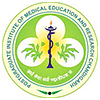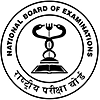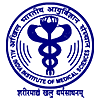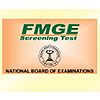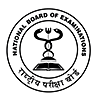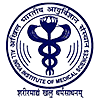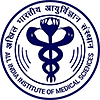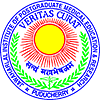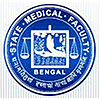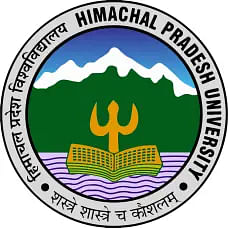
Table of Contents
PGIMER syllabus 2025 should be referred for preparations of the exam. The syllabus is given below. The candidates must go through the PGIMER exam pattern and syllabus in order to gather all the study materials and prepare for the PGIMER exam well. Along with books, candidates must also look at sample papers and previous year papers.
The conducting authority, the Postgraduate Institute of Medical Education & Research (PGIMER), Chandigarh prescribes the PGIMER entrance exam syllabus.
PGIMER Syllabus 2025 PDF
The PGIMER syllabus PDF is a useful component for students prepping for the main exam. Students have the provision of PGIMER syllabus download to combine the exam pattern and syllabus, and devise a study schedule accordingly. Applicants can download the syllabus PDF by click on the link below:
| PGIMER Syllabus 2025 PDF | View Here |
PGIMER 2025 Syllabus
For MD/MS and MDS, the syllabus consists of subjects from graduation subjects of MBBS and BDS courses. The questions will be mostly asked from pre-clinical, para-clinical and clinical subjects. The applicants can check on the official website for PGIMER syllabus download.
The topics for PhD and MD/ MS courses are as given below.
| Course | Topics |
| Ph.D. | General Science English Biostatistics Research Methodology Non-Medical Sciences Medical (MBBS level) Social and Behavioural Sciences. |
| MD/ MS | Applied Anatomy Applied Biochemistry Immunogenetics and Molecular Biology Applied Physiology Pathology Pharmacology Microbiology Forensic Medicine Social and Preventive Medicine Internal Medicine Paediatrics Dermatology Psychiatry Radio-Diagnosis Obesity and Gynaecology Radio Therapy General Surgery Otorhinolaryngology Ophthalmology Orthopaedics. |
PGIMER MD/MS Syllabus in Detail
The PGIMER 2025 syllabus topics and contents for each topic are given below in detail. The applicants can check the official website for PGIMER syllabus 'Download PDF' link.
| Topics | Contents |
| Applied Anatomy | Gross Anatomy Osteology Muscular System Arthrology Cardio Vascular System Respiratory System Digestive System Genito-Urinary System Endocrine System and Individual Endocrine Glands Nervous System and its components Special Sensory Organs Lymphatic System Surface Anatomy Cross-Sectional Anatomy Cross-sections of Thorax Abdomen and Pelvis to Understand the Interrelationship of Organs and Structures Microanatomy. |
| Applied Physiology | General Physiology Nerve–Muscle Blood Respiratory System Cardiovascular System Gastrointestinal System Nutrition, Environmental Physiology Reproduction Kidney Neurophysiology Sensory System Motor System Visceral and Motivational System EEG, Sleep and Higher Nervous Functions Special Senses Yoga |
| Applied Biochemistry | Biological Cell Biomolecules Enzymes Metabolic Pathways, Their Regulation and Metabolic Interrelationships Metabolism of Amino Acid Lipid Carbohydrate TCA Cycle and Biological Oxidation Proteinoids Regulation of Nutrition Metabolic Pathways Food Assimilation Hormones Molecular Biology pH Buffer, Physiological Buffer Systems Immunology Environmental Biochemistry Cancer and Cancer Makers |
| Pharmacology | General Pharmacology Autonomic Nervous System & Peripheral Nervous System Central Nervous System Autacoids Cadiovascular, Gastrointestinal and Respiratory System Hormones Chemotherapy Immunomodulators Drug Therapy of Glaucoma and Cataract Treatment of Poisoning |
| Microbiology |
Introduction to Microbiology
Bacteriology, Parasitology, Virology and Mycology Bacterial Staining and Cultivation Common Tests for Bacterial Identification Laboratory Diagnosis of Viral Infection Common Laboratory Methods for Diagnosis of Fungal Infections Collection of Transport of Samples Host-Parasite Relationship Bacterial and Viral Genetics Immunity to Infection Immunodiagnostic Vaccines Sterilization and Disinfection Bacteriology of Water and Air Microorganisms Associated with Gastrointestinal Infections (Bacteria, Parasites, Viruses and Fungi) Gastrointestinal Infections Caused by Parasites. |
| Pathology | Introduction to Pathology Cell Injury, Amyloidosis and Calcification Inflammation and Repair Circulatory Disturbances Growth Disturbances and Neoplasia Immunopathology Infectious Diseases Miscellaneous Disorders Cardiovascular Pathology Respiratory Pathology Urinary Tract Pathology Pathology of the Gastro-Intestinal Tract Hematopathology Liver and Biliary Tract Pathology Lymphoreticular System Reproductive System Osteopathology Endocrine Pathology Neuropathology |
| Forensic Medicine | Forensic Pathology Clinical Forensic Medicine Medical Jurisprudence Forensic Psychiatry Forensic Sciences General, Clinical, Environmental and Analytical Toxicology |
| Social and Preventive Medicine | History of Public Health Concepts in Public Health Epidemiology and Research Methodology Epidemiology of Specific Diseases Entomology Biostatistics Health Planning and Public Health Administration Nutrition Environmental Health Demography Mental Health and Education Technology Environmental Sanitation Demography and Family Planning Mental Health Recent Advancements in Public Health and Miscellaneous Topics Sociology School, Occupational, Urban Health |
| Surgery, ENT, Orthopaedics and Anaesthesia |
Diagnose with reasonable accuracy all surgical illnesses including emergencies
Surgical Knowledge of Head, Spine, Chest Abdominal and Pelvic Injury Knowledge About Various Surgical Techniques Such as Venesection, Tracheostomy and Endotracheal Intubation, Circumcision Biopsy of Surface Tumours Comprehensive Diagnosis of Common Ear, Nose and Throat (ENT) Diseases Including the Emergencies and Malignant Neoplasm of the Head and Neck Use of a Head Mirror Otoscope and Indirect Laryngoscopy Possess Knowledge of Various ENT Rehabilitative Programmes Therapeutic Orthopedics Knowledge on Splinting Manual Reduction of Common Fractures and Dislocations Recognize Metabolic Bone Diseases Acquire Knowledge on a Pre-Anaesthetic Checkup and Pre-Anaesthetic Medications Simple General Anaesthetic Procedures Anaesthetic Records Cardio-Pulmonary Brain Resuscitation (C.P.B.R.) Methods. |
| Ophthalmology | Anatomy and Development of the Eye Clinical Methods in Ophthalmology Optics and Refraction Disease of the Conjunctiva Disease of the Cornea Disease of the Sclera Disease of the Uveal Tract Lens, Glaucoma, Vitreous, Retina Vision and Neuro-Ophthalmology Strabismus and Nystagmus Disease of the Lids Disease of the Orbit Ocular Injuries Basic Principles of Ocular Therapy Systemic Ophthalmology Community Ophthalmology Disease of the Lacrimal Apparatus Miscellaneous Topics |
| Obstetrics and Gynaecology |
Basic Sciences-Normal & Abnormal Development
Structure and Function of Female & Male Urogenital Systems Endocrinology of the Reproductive System Gametogenesis Fertilization Role of Hormones in Obstetrics & Gynecology Humoral and Cellular Immunology in Obstetrics & Gynecology, Physiology of Normal Pregnancy Diagnosis of Pregnancy Anemia in Pregnancy Carcinoma Cervix Epidemiology Staging Diagnostic Procedure, Treatment of Menopause and Related Problems Contraception, Neonatology, and Recent Advances. |
| Pediatrics | Contraception Neonatology and Recent Advances Growth and Development Nutrition Immunization Infectious Diseases Hematology Respiratory System Gastro-Intestinal Tract Central Nervous System Cardiovascular System Genito-Urinary System Neonatology Pediatrics Emergencies Fluid-Electrolyte Genetics Behavioral Problems Pediatrics Surgical Problems Therapeutics. |
| Psychiatry |
Behavioral Sciences
Cognitive Process, and Memory Thinking and Problem-Solving Intelligence General Concepts and Techniques for Assessment Personality (Principles of Personality development) and Objective Testing of Personality Introduction and Classification of Psychiatric Disorder Aetiology of Psychiatric Disorders Drug and Alcohol Dependence Personality Disorders Counselling and Psychological Therapies Psychological Testing |
| Radiodiagnosis and Radiotherapy |
Identify and Diagnose All Aspects of Emergency Room Radiology
Basic Hazards and Precautions in Radio-diagnostic Practices The Basic Need of Various Radio-diagnostic Tools in Medical Practice Learn About Various Imaging Techniques Including Isotopes C.T. Ultrasound, M.R.I. and D.S.A. Know About Radio-Active Isotopes and their Physical Properties Identify Symptoms and Signs of Various Cancers and their Steps of Investigations and Management |
FAQs on PGIMER Syllabus
Q: Is there a different between PGIMER syllabus for Ph.D and MD/MS course?
Q: What is the PGIMER syllabus for Ph.D courses?
Q: What are the subtopics included in Pharmacology for PGIMER 2025 syllabus?
Q: How can students download the PGIMER syllabus 2025?
